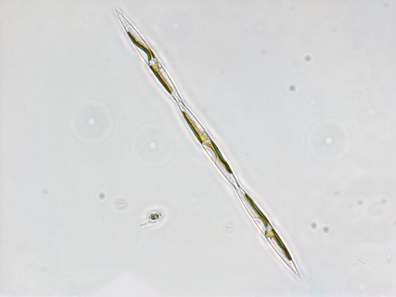
Toxin Produced: Domoic Acid
Syndrome: Amnesic Shellfish Poisoning
The connection between phytoplankton and domoic acid was discovered in 1987, when over 100 people were sickened and three died following consumption of DA-contaminated mussels from eastern Prince Edward Island, Canada. In California, DA was first recognized in September 1991 in Monterey Bay, when the deaths of more than 100 brown pelicans and cormorants were linked to DA poisoning. Since then, the toxin has been implicated in other deaths of marine mammals and seabirds between Monterey Bay and San Diego.
Some species of the marine diatom Pseudo-nitzschia can produce domoic acid (DA), a naturally occurring but rare amino acid that is toxic to marine mammals, seabirds, and to humans. Affected individuals may experience gastrointestinal disorders and neurological problems. One of the primary symptoms, amnesia, led to the naming of the syndrome as Amnesic Shellfish Poisoning (ASP).
At least nine species of Pseudo-nitzschia are now known to produce DA. In California, Pseudo-nitzschia australis and Pseudo-nitzschia multiseries are the main toxin producers.
